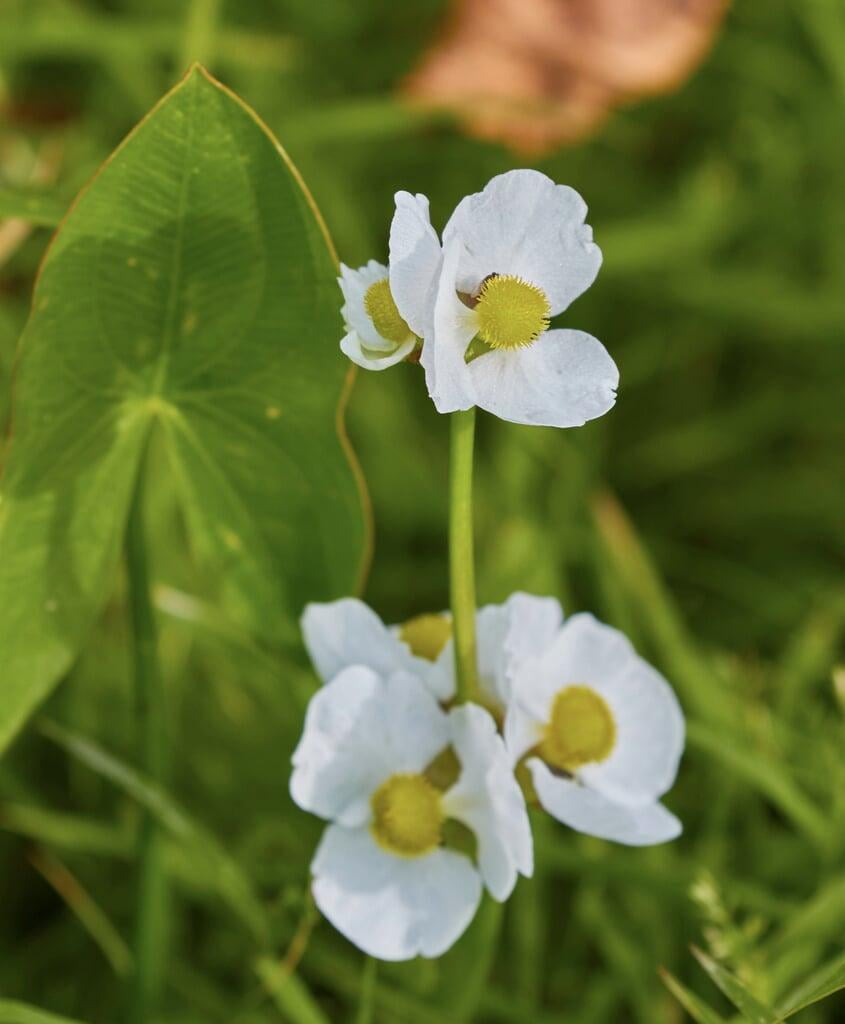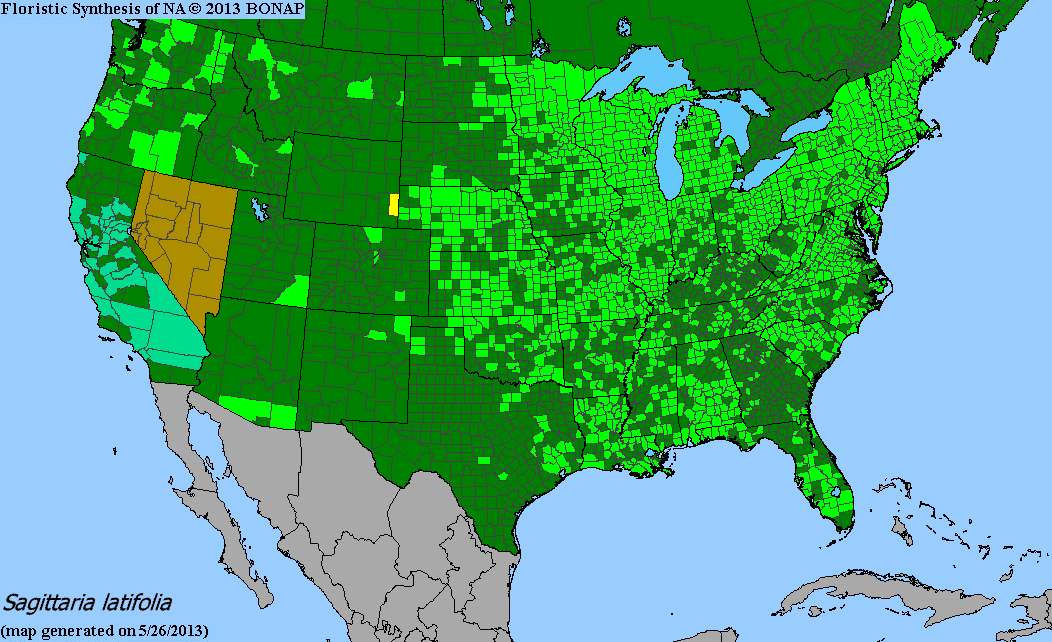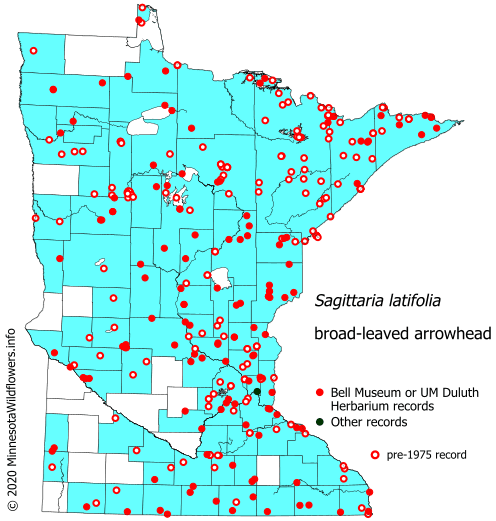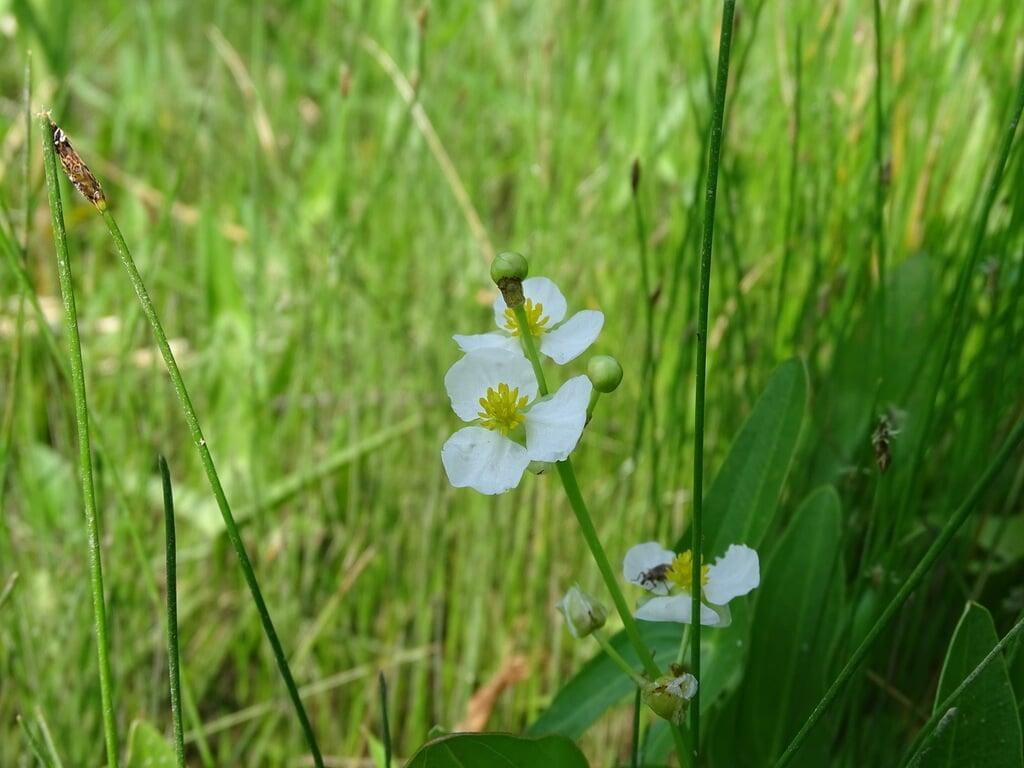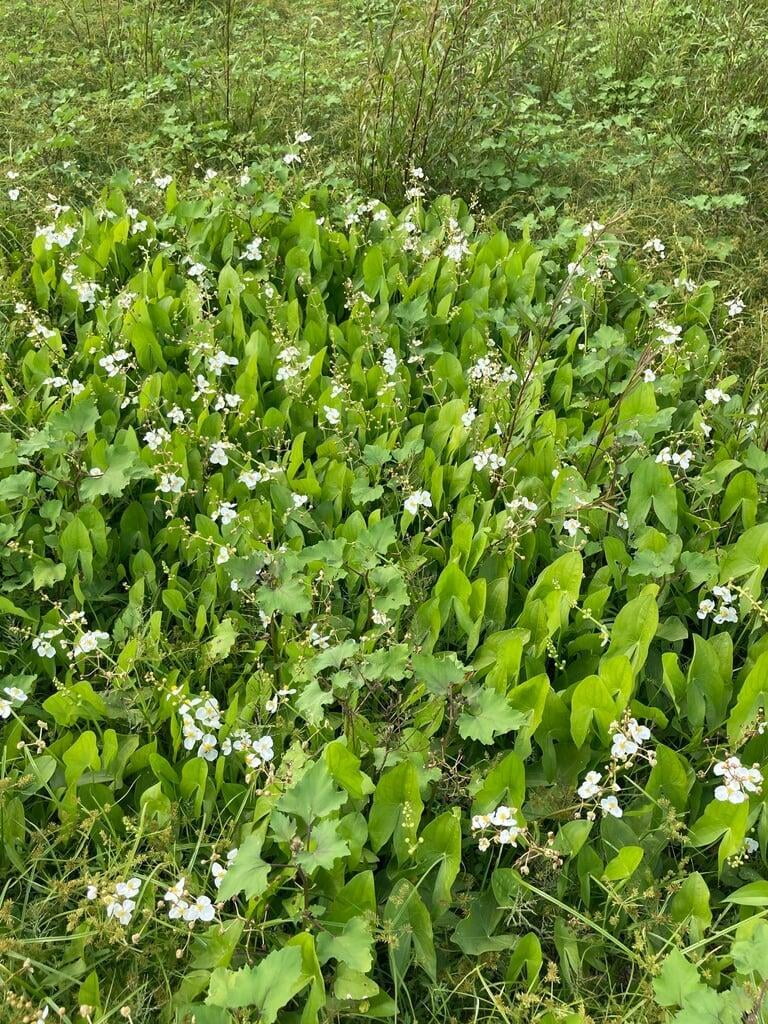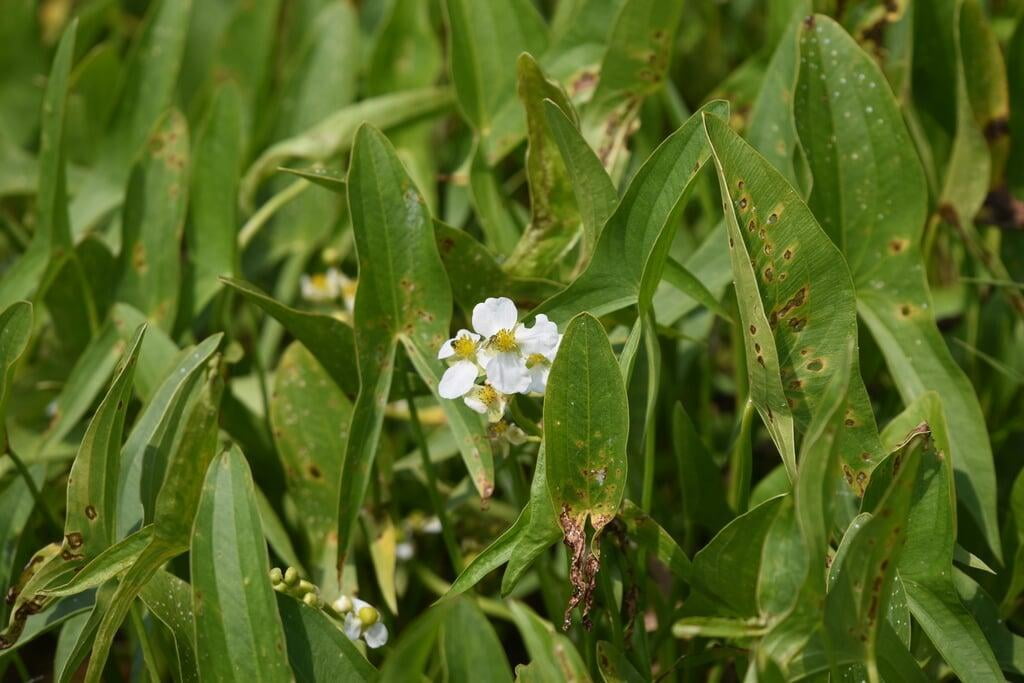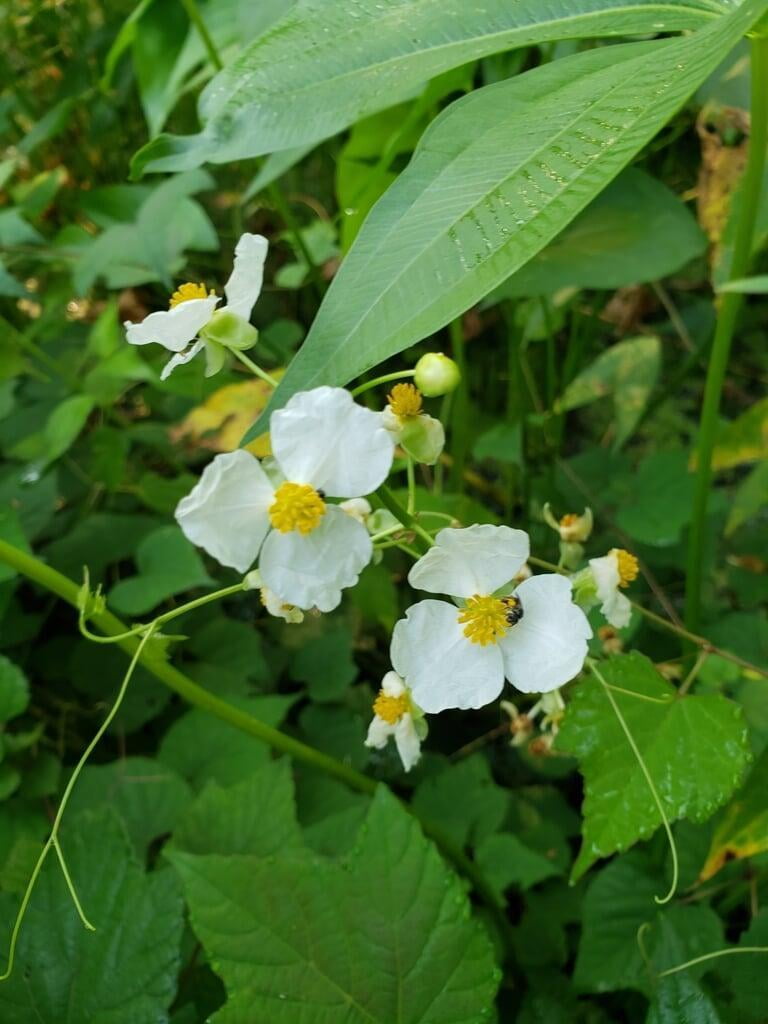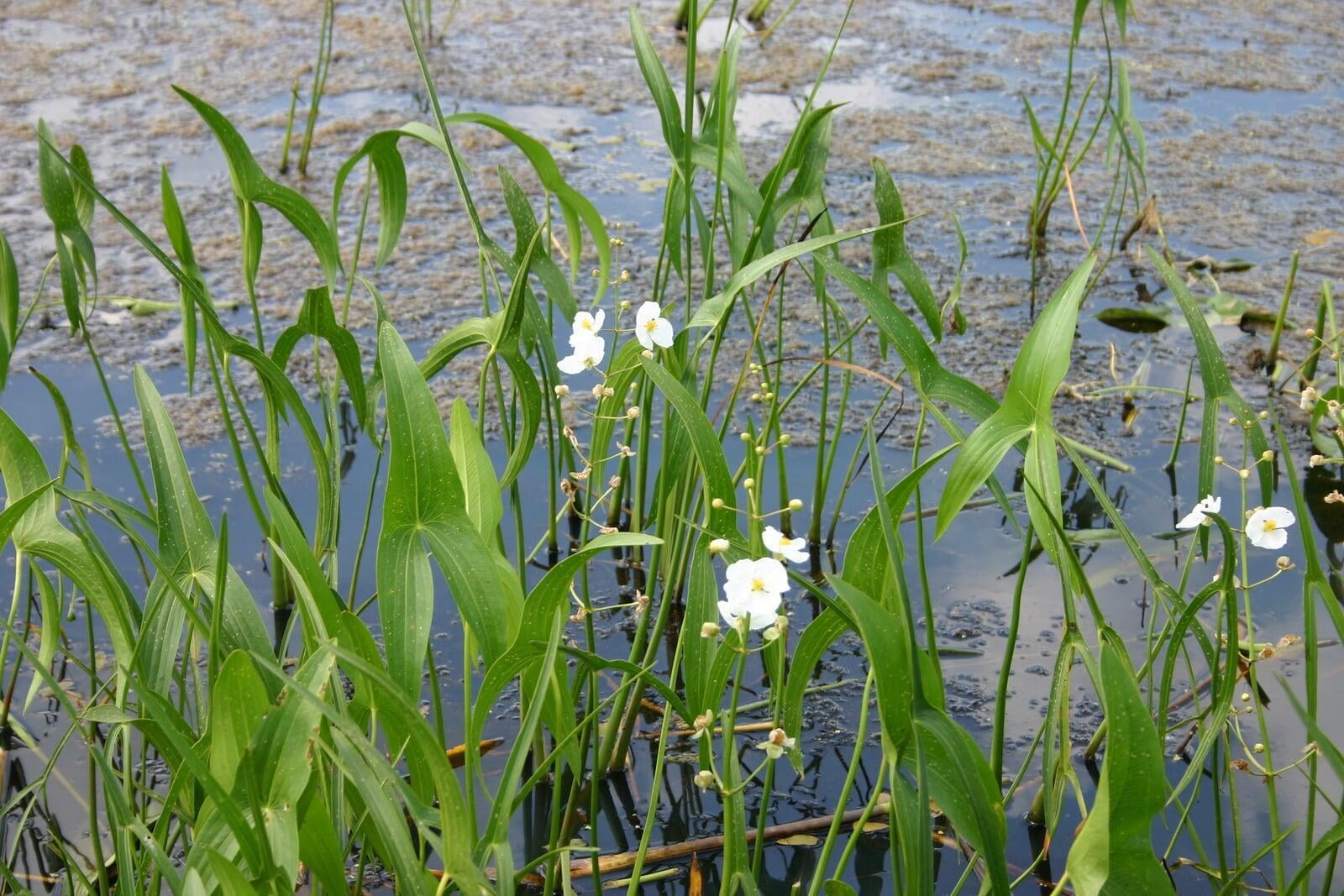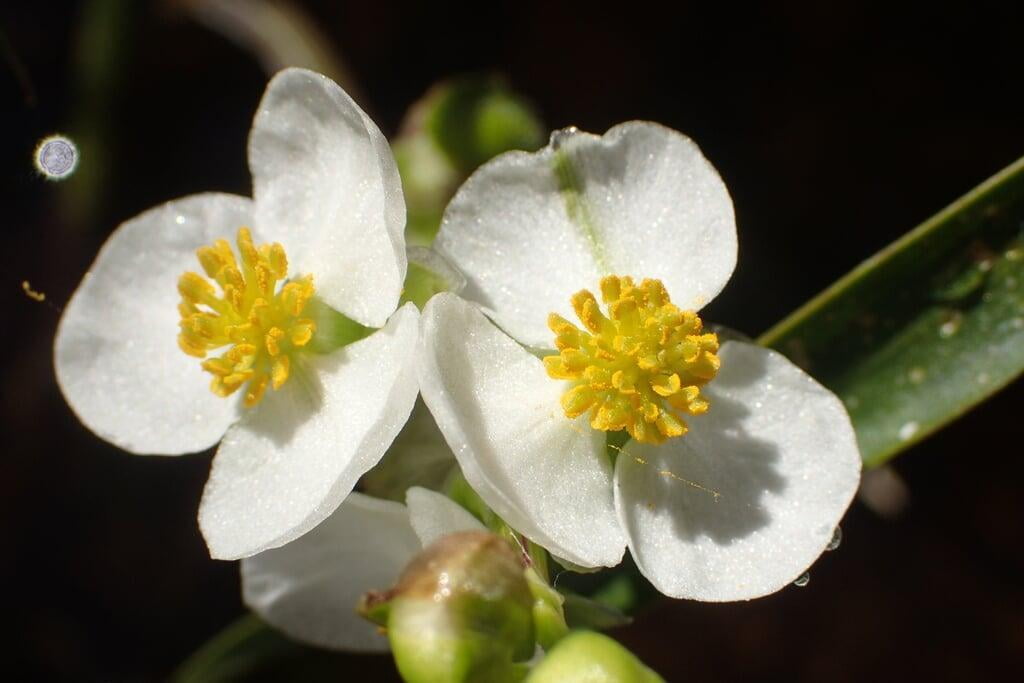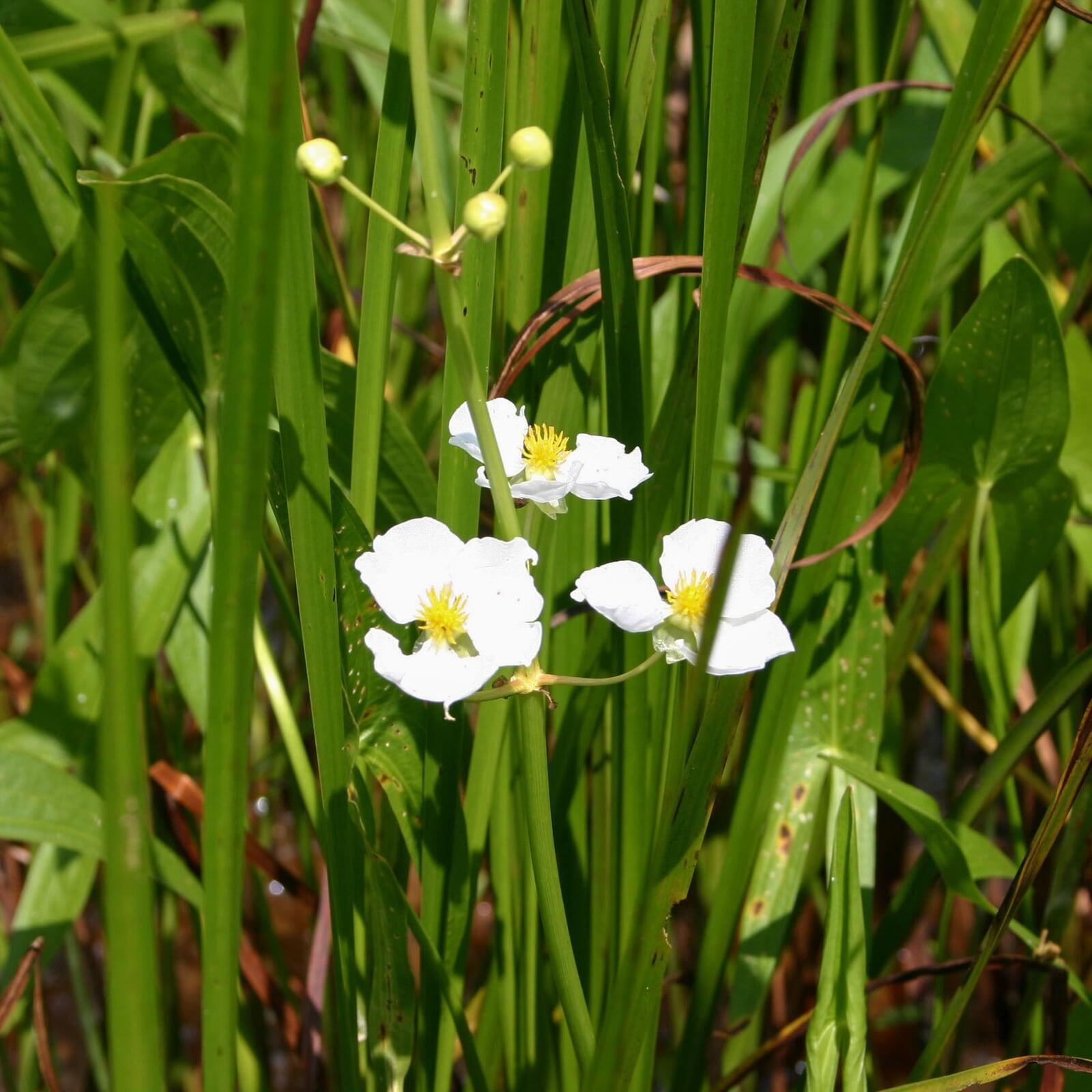Sagittaria latifolia
Arrowhead Description:
Sagittaria latifolia, also known as arrowhead, is a herbaceous perennial plant that is native to North America. As an aquatic plant, it is well-suited for wetland habitats, where it can be found growing along the edges of ponds, lakes, and slow-moving streams. The plant's most notable feature is its arrow-shaped leaves, which are triangular in shape and can grow up to 12 inches long. The leaves are typically submerged in water, but can also grow above the water's surface in shallow areas. In mid to late summer, the plant produces small, white flowers with three petals that bloom on tall, slender stems.
Sagittaria latifolia is an important plant for aquatic wildlife, providing cover and food for a variety of species such as amphibians, reptiles, ducks, and geese. The plant's seeds are a valuable food source for waterfowl, while its tubers are edible and have been used in Native American cuisine for centuries. In addition to its ecological value, Sagittaria latifolia is also a popular ornamental plant that is often used in water gardens and bog gardens. Its attractive leaves and flowers make it an excellent choice for adding interest and texture to water features, while its ability to tolerate wet soil conditions makes it a valuable plant for erosion control.
Overall, Sagittaria latifolia is a versatile and important plant that is well-suited for a variety of wetland habitats. Its arrow-shaped leaves and white flowers make it an attractive addition to water gardens and bog gardens, while its value as a food source for aquatic wildlife makes it an important component of many natural landscapes.
Native Range:
Arrowhead is found across most of the United States. In Minnesota, Arrowhead is found in most regions of the state as well.
Standard Plant Information:
Plant Height: 1' - 4'
Bloom Time: July - September
Preferred Habitat: Does well in part shade to full sun. Often found in swamps, streams, wet ditches, and shallow water.
Sowing:
For most homeowners, the best option is to scatter seed on the ground by hand broadcasting at a minimum of 16-64 pls ounces per acre. For even coverage, we recommend that you broadcast seed in perpendicular rows across the site to ensure even coverage.
You’ll want to broadcast any grass seed first, which will get raked into the soil lightly. Next, it is ideal to mulch the area lightly with either a clean (no seed) straw or preferably with our native Little Bluestem straw, sold at our retail garden centers. After a light mulching is complete, now it’s time to broadcast your native wildflower seeds, which should not be raked into the soil. A good rain or watering is sufficient to cover the seed.
Planting:
Simply dig a hole in the soil slightly larger than the plant’s roots. Ensure that the soil line of the plant is maintained during the transfer (i.e. the plant should be at the same level with the ground as it was in the pot). Pack any loose dirt back around the plant and make sure you water it well the same day to ensure it has the best chance of survival.

